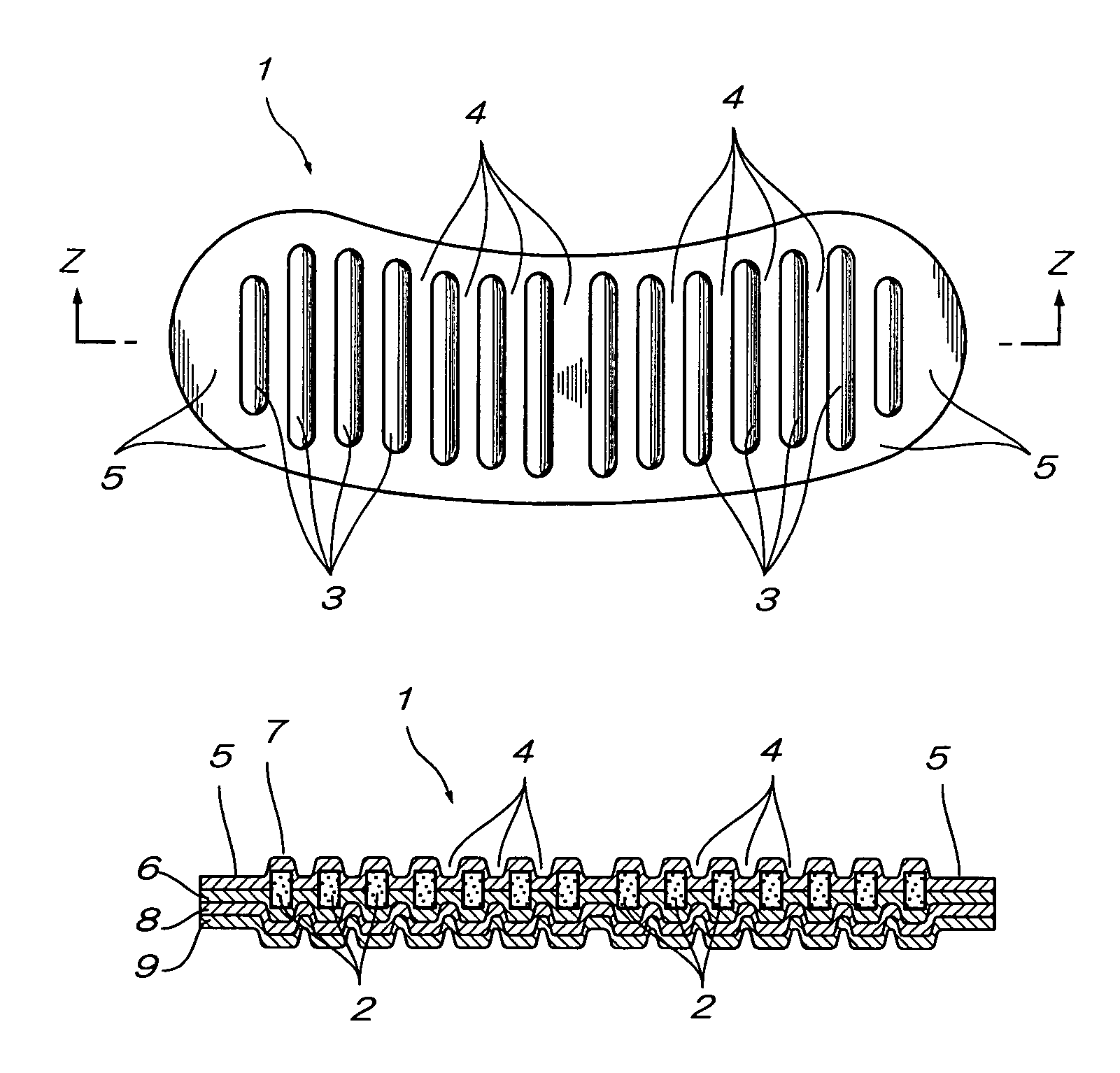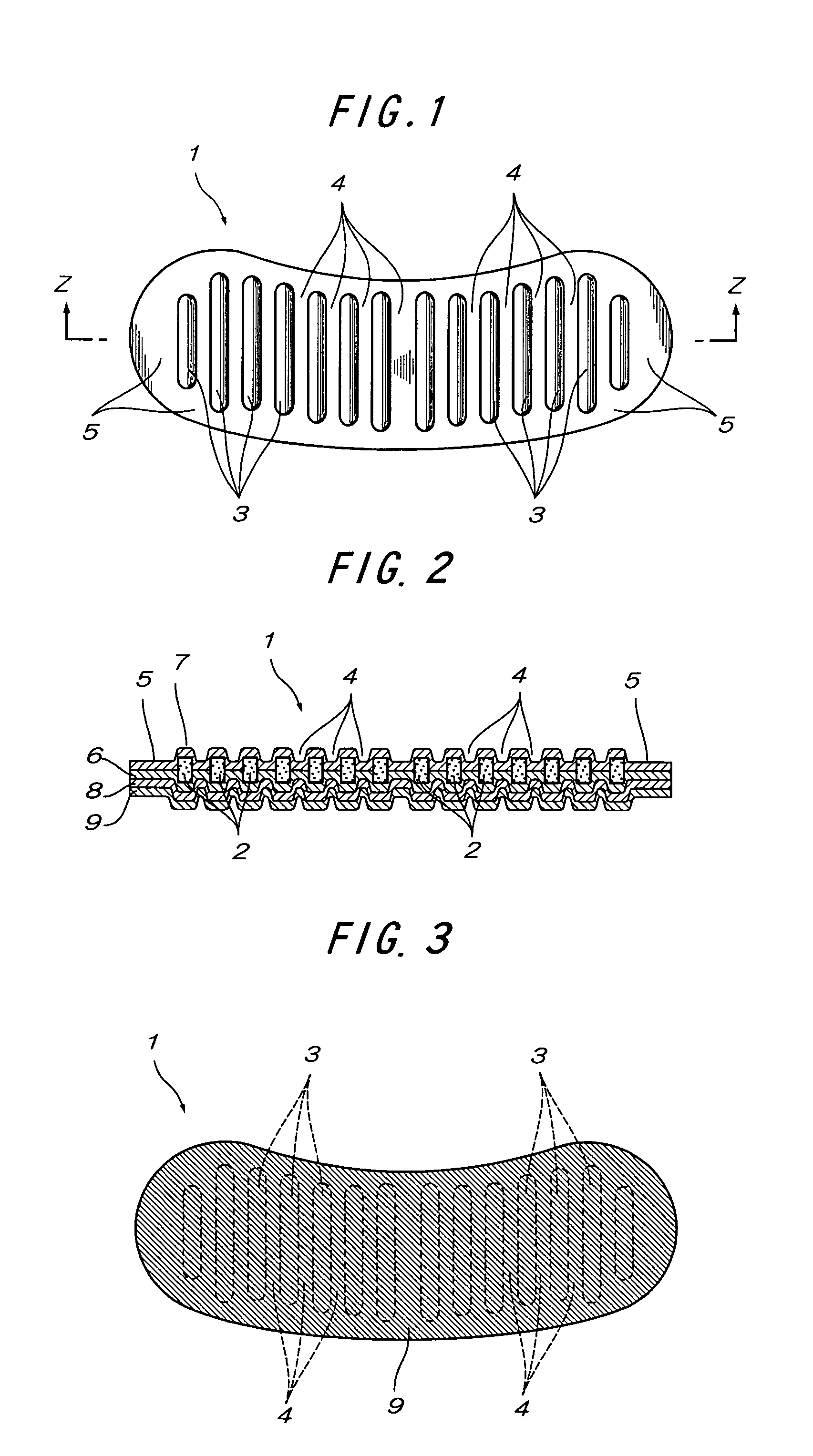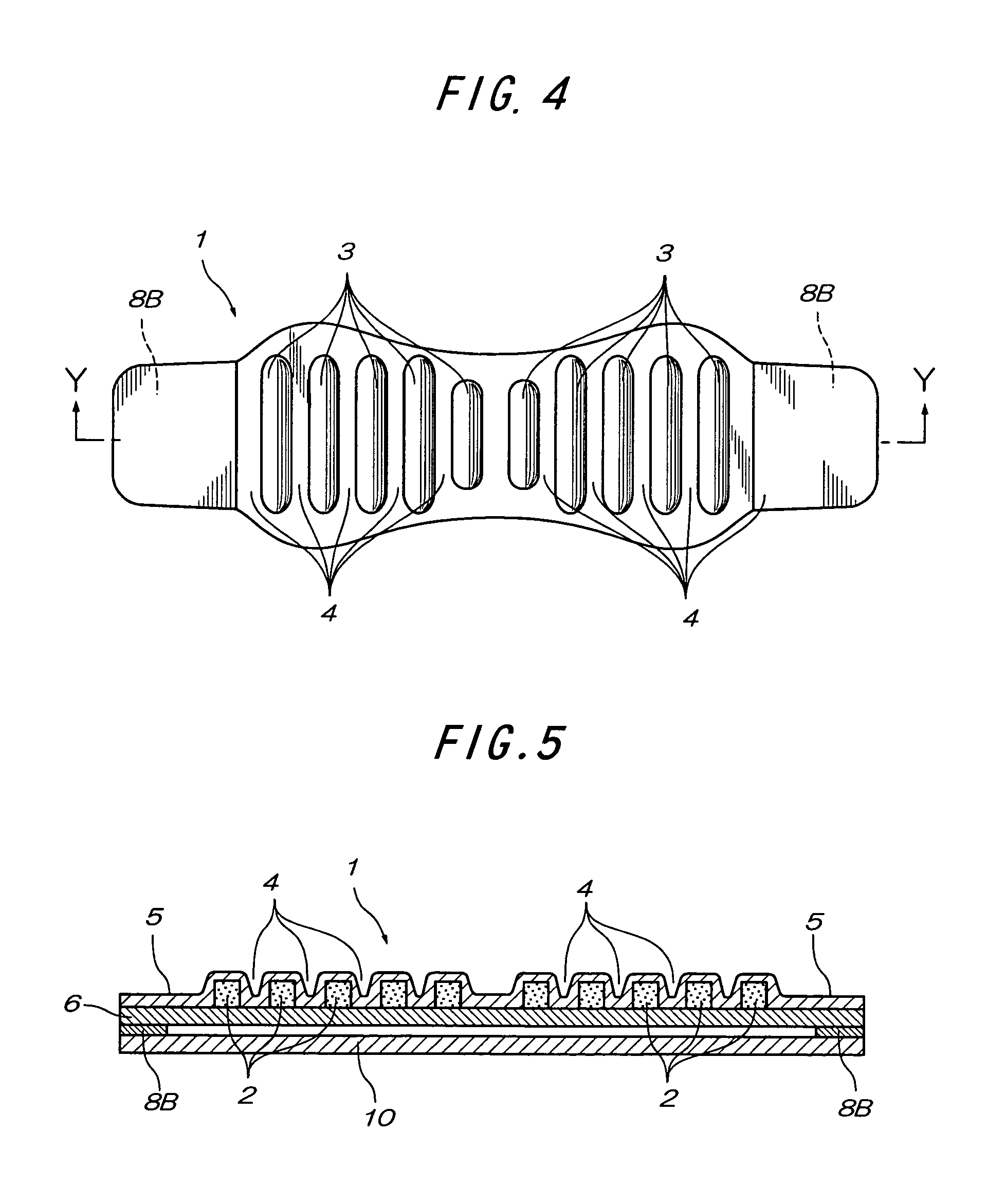Heat generating body, heat insulating method using the same and packaging material for die molding heat generation
a technology of heat generation body and heat insulating method, which is applied in the direction of exothermal chemical reaction heat generation, contraceptive devices, lighting and heating apparatus, etc., can solve the problems of large size, inability to achieve warming along the muscular or tendon direction, and inability to achieve exothermic performance of chemical substances
- Summary
- Abstract
- Description
- Claims
- Application Information
AI Technical Summary
Benefits of technology
Problems solved by technology
Method used
Image
Examples
example 1
[0465]This Example will be described below with reference to FIG. 1 and FIG. 2.
[0466]A heat generating composition having a water mobility value of 8, which is a mixture consisting of 100 parts by weight of a reduced iron powder (particle size: not more than 300 μm), 7.0 parts by weight of active carbon (particle size: not more than 300 μm), 5.0 parts by weight of a wood meal (particle size: not more than 300 μm), 0.8 parts by weight of a water absorptive polymer (particle size: not more than 300 μm), 0.2 parts by weight of calcium hydroxide, 0.7 parts by weight of sodium sulfite and 11% of salt water, was used.
[0467]Next, the heat generating composition was molded by using a trimming die provided with seven cavities in a striped form in each of the right and left sides thereof. Incidentally, the cavities were provided at intervals of 10 mm only in the central part and at intervals of 5 mm in other part, respectively. Also, the dimensions of the cavities were 7 mm in width×80 mm in ...
example 2
[0471]A reaction mixture having a water mobility value of less than 0.01, which consists of 100 parts by weight of a reduced iron powder (particle size: not more than 300 μm), 3.5 parts by weight of active carbon (particle size: not more than 300 μm), 4.0 parts by weight of a wool mean (particle size: not more than 300 μm), 2.2 parts by weight of a water absorptive polymer (particle size: not more than 300 μm), 0.2 parts by weight of calcium hydroxide, 0.7 parts by weight of sodium sulfite and 11% salt water, was charged as a heat generating composition in a contact treatment device vessel. Next, the upper portion of the contact treatment device vessel was opened to air, and the reaction mixture was subjected to self heat generation with stirring in the opened state to air under circumstances at 20° C. At a point of time when the temperature rise of the reaction mixture reached 40° C., the reaction mixture was sealed in an air-impermeable accommodating bag and cooled to room tempera...
example 3
[0476]As shown in FIG. 4 and FIG. 5, a heat generating body 1 in a paper lantern-like shape having striped sectional exothermic parts 3 was produced in the same manner as in Example 2. However, in this Example, a pressure sensitive adhesive double coated tape was provided as an adhesive layer 8B on the surface opposite to the air-permeable surface in every end part in the longitudinal direction. The heat generating body 1 was fixed to a shoulder by the adhesive layers 8B and then subjected to an exothermic test for the body. As a result, the heat generating body had good adaptability to the shoulder. Furthermore, a temperature characteristic, curved surface fitness, winding properties and usefulness were evaluated. As a result, the heat generating body was superior in all of these evaluations.
PUM
| Property | Measurement | Unit |
|---|---|---|
| temperature | aaaaa | aaaaa |
| breaking elongation | aaaaa | aaaaa |
| temperature | aaaaa | aaaaa |
Abstract
Description
Claims
Application Information
 Login to View More
Login to View More - R&D
- Intellectual Property
- Life Sciences
- Materials
- Tech Scout
- Unparalleled Data Quality
- Higher Quality Content
- 60% Fewer Hallucinations
Browse by: Latest US Patents, China's latest patents, Technical Efficacy Thesaurus, Application Domain, Technology Topic, Popular Technical Reports.
© 2025 PatSnap. All rights reserved.Legal|Privacy policy|Modern Slavery Act Transparency Statement|Sitemap|About US| Contact US: help@patsnap.com



